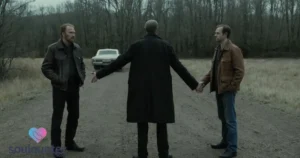“the rich tapestry of Russian Christmas traditions that bring joy and warmth to the festive season.”
During Christmas in Russia, people celebrate with unique traditions and joyful festivities. While many people around the world celebrate Christmas on December 25th, Russians observe it on January 7th due to the Orthodox Christian calendar. This holiday is rich in customs that reflect the country’s cultural heritage and religious beliefs.
One of the most fascinating aspects of Russian Christmas is its blend of religious and folk traditions. Families gather to celebrate with special meals, rituals, and games. The atmosphere is festive and inviting, with many customs passed down through generations. This creates a sense of togetherness and joy among family and friends.
In this blog post, we will explore over 145 interesting Russian Christmas traditions. From the delicious foods enjoyed during the holiday to the customs that bring families together, there is much to discover. Whether you are curious about how Russians celebrate Christmas or looking to incorporate some of these traditions into your own celebrations, this guide will provide you with valuable insights.
1Families around the world celebrate Christmas Eve traditions.
- Sviata Vechera: This is the Holy Evening meal on January 6th, featuring twelve dishes to represent the twelve apostles.
- Kutya: A special dish made of wheat, honey, and poppy seeds served during Sviata Vechera to symbolize prosperity.
- Fasting: Many Russians fast before Christmas, avoiding meat and dairy products until the festive meal.
- Setting the Table: The table is set with a white cloth to symbolize purity and is adorned with special dishes.
- Empty Plate: An extra plate is set for deceased family members, honoring their memory during the meal.
- Singing Carols: Traditional carols called kolyadki are sung to bring joy to the household.
- Lighting Candles: Candles are lit to symbolize the light of Christ, creating a warm and inviting atmosphere.
- Homemade Bread: Families bake special bread, such as paskha, to celebrate the holiday.
- Family Gatherings: Families come together on Christmas Eve to share stories and enjoy each other’s company.
- Special Prayers: Many families start the meal with prayers, asking for blessings and gratitude.
- Decorative Boughs: Families often use decorative boughs of fir or pine to adorn their homes.
- Oreshki: These are nut-shaped cookies filled with caramel or condensed milk, enjoyed during Sviata Vechera.
- Plum Compote: This sweet drink made from dried fruits is often served to complement the festive meal.
- Baking Vatrushka: A sweet cheese pastry often prepared for the Christmas celebration.
- Kisiel: A sweet dessert made from berries and starch, served as a part of the meal.
- Homemade Pickles: Pickled vegetables are served as appetizers during the festive dinner.
- Blessing the Food: Before the meal, families might bless the food, asking for a good harvest in the coming year.
- Christmas Movies: Watching Christmas-themed films or performances is a common way to celebrate.
- Making Wishes: Family members often make wishes for the new year during the meal.
- Gift of Food: Some families prepare small food gifts for neighbors, spreading goodwill.

2. Christmas Day Celebrations: Families celebrate Christmas Day with joy and traditions.
- Church Services: Many Russians attend church services on January 7th, participating in special prayers and hymns.
- Feasting: After the church service, families gather for a festive meal filled with traditional dishes.
- Traditional Desserts: Desserts like medovik (honey cake) and prjaniki (gingerbread cookies) are enjoyed during celebrations.
- Gift Giving: Exchanging gifts occurs among family and friends, often after the festive meal.
- Visiting Relatives: People often visit relatives and friends, sharing food and joy on Christmas Day.
- Singing Hymns: Families come together to sing hymns and carols, celebrating the birth of Christ.
- Cultural Events: Some cities host concerts and performances showcasing traditional music and dances.
- Decorating the Table: The festive table is beautifully decorated with cloths, flowers, and ornaments.
- Exchanging Blessings: Family members exchange blessings, fostering goodwill and love for the upcoming year.
- Special Soups: Traditional soups, like shchi (cabbage soup), are often served as part of the festive meal.
- if possible Blessings: Younger family members often seek blessings from the elders before the meal begins.
- Festive Toasts: During the meal, it’s common to raise glasses and make toasts to health and happiness.
- Visiting the Sick: Some families visit sick friends or relatives to bring them holiday cheer and blessings.
- Reading Scripture: Many families read the Nativity story from the Bible as part of their Christmas observance.
- Traditional Songs: Singing traditional songs together is a way to enhance the festive spirit.
- Fruit Baskets: Gift baskets filled with fruits and nuts are often shared among friends and neighbors.

- Carrying the Cross: In some regions, a cross is carried around homes as a blessing for protection.
- Dancing: Traditional folk dances may be performed in family gatherings to celebrate the occasion.
- Homemade Mulled Wine: Families often enjoy warm mulled wine made with spices and fruits during Christmas.
- Sharing Stories: Grandparents often share stories of past Christmases, passing down family traditions.
3. Iconic Decorations
- Christmas Tree: The Christmas tree, or Yolka, is a central decoration in Russian homes, often adorned with lights and ornaments.
- Pine Branches: Families decorate their homes with pine branches to bring the scent of nature indoors.
- Homemade Ornaments: Many families make their own ornaments, adding a personal touch to their Christmas decorations.
- Stars and Angels: Stars and angels are common decorations, symbolizing the Star of Bethlehem and the angels announcing Christ’s birth.
- Nativity Scenes: Many homes display nativity scenes, called betlehems, to represent the birth of Jesus, often featuring local craftsmanship.
- Christmas Wreaths: Wreaths made of evergreen branches are hung on doors to symbolize eternal life.
- Decorating with Garlands: Colorful garlands made of paper or fabric are often used to decorate homes.
- Bells: Bells are hung around the house as symbols of joy and celebration.
- Lighting Displays: Many families decorate their windows with beautiful lights, creating a festive ambiance.
- Traditional Colors: Red and gold are commonly used in decorations, symbolizing joy and prosperity.
- Personal Touches: Families often include personal mementos and family heirlooms in their decorations.
- Folk Art: Traditional Russian folk art pieces may be incorporated into holiday decorations.
- Handcrafted Items: Many families craft their decorations, showcasing their creativity and artistry.
- Candles: Decorative candles are placed throughout the home, adding warmth and light.
- Christmas Stockings: Families may hang stockings to collect small gifts and treats.
- Decorated Eggs: Easter-style eggs may be decorated and hung as part of the Christmas decor.
- Seasonal Flowers: Flowers like poinsettias or evergreens are used to brighten the home.
- Fruits and Nuts: Decorative arrangements of fruits and nuts symbolize abundance.

- Paper Snowflakes: Children often make paper snowflakes to hang in windows, adding a whimsical touch.
- Symbolic Colors: Each decoration has a specific meaning, contributing to the overall theme of hope and joy.
4. Traditional Foods
- Olivier Salad: A popular salad made with potatoes, carrots, peas, and mayonnaise, enjoyed during Christmas festivities.
- Borscht: A beet soup often served as a warm appetizer during holiday meals.
- Fish Dishes: The festive meal often includes various fish dishes that symbolize abundance.
- Pirozhki: People enjoy these baked buns filled with various fillings as snacks during the holiday.
- Roast Goose: Some families serve roast goose as the main dish on Christmas Day.
- Stuffed Cabbage: Many people enjoy cabbage rolls filled with meat and rice as a traditional dish
- Caviar: Serving caviar signifies luxury and many people often include it in Christmas feasts.
- Honey Cakes: Sweet honey cakes are a traditional dessert that symbolizes sweetness and love.
- Tea with Jam: Russian tea served with homemade jams and preserves is a common drink during celebrations.

- Kasha: Cooks often serve buckwheat porridge, known as kasha, as a side dish during holiday meals.
- Gingerbread Cookies: Children especially decorate and enjoy these during Christmas.
- Plov: A fragrant rice dish cooked with meat and spices, often served during festive occasions.
- Vareniki: Dumplings filled with sweet or savory fillings, commonly enjoyed during holiday meals.
- Fruit Compote: A sweet drink made from boiled fruits, served warm during Christmas dinners.

- Seasonal Nuts: Bakers often include nuts like walnuts and hazelnuts in holiday treats
- Kvass: A traditional fermented beverage made from bread, enjoyed as a refreshing drink during meals.
- Pirog: A savory pie filled with meat or vegetables, commonly served during festive gatherings.
- Rassolnik: A hearty soup made with pickles, meat, and barley, often included in Christmas menus.
- Homemade Pickles: People enjoy fermented vegetables, a staple in Russian cuisine, as side dishes
Entertaining Ways to Pass Time at Home
5. People participate in religious observances
- Midnight Mass: Many families attend midnight mass on Christmas Eve, a central part of the celebration.
- Holy Water Blessing: It is customary to bless water during the Christmas service, signifying purity and renewal.
- Reading from the Gospel: Churches often read aloud the Nativity story during the Christmas service.
- Lighting Candles in Church: Churches light candles to symbolize the light of Christ entering the world.
- Participating in Processions: Many communities hold processions on Christmas Eve, singing hymns and prayers.
- Confession: It is common for individuals to confess before Christmas, seeking forgiveness and spiritual renewal.

- Icon Veneration: Families may venerate icons of Christ and the Virgin Mary as part of their Christmas observance.
- Prayer for Peace: People offer special prayers for peace and goodwill among all..
- Carrying the Cross: In some regions, people carry a cross during processions as a symbol of faith.
- Making the Sign of the Cross: People often make the Sign of the Cross during prayers and religious rituals to show devotion.
- Gift Offerings: Some families make small offerings at church as a gesture of gratitude and faith.
- Special Choir Performances: Many churches have choirs that perform traditional hymns during the Christmas service.
- Participation in Rites: Attending various rites and blessings conducted by priests is a significant part of the holiday.
- Light Processions: Some communities organize light processions, carrying candles and singing hymns through the streets.
- Blessing Homes: Priests may visit homes to bless them with holy water during the Christmas season.
- Prayers for the Sick: The congregation offers special prayers for the health and well-being of loved ones during the service.
- Offering Thanks: Congregants often offer thanks for the blessings received throughout the year.
- Celebrating the Divine Liturgy: Attending the Divine Liturgy on Christmas Day is a tradition for many Orthodox Christians.
- Baking Prosphora: The community bakes this special bread for the liturgy and shares it among worshippers.
- Prayer Candles: Lighting candles in memory of loved ones is a cherished tradition during Christmas.
6. Unique Russian Customs
- Ded Moroz: This winter figure, similar to Santa Claus, brings gifts to children on New Year’s Eve and Christmas.
- Christmas Eve Divination: Some families practice divination rituals on Christmas Eve, seeking insights into the future.
- Festive Games: Families and friends play traditional games, enhancing the holiday spirit.
- Kolyadki Singing: Groups of people go door to door singing kolyadki, spreading cheer and receiving treats.
- Epiphany Celebrations: Epiphany, celebrated on January 19th, includes unique customs like ice swimming and blessing water.
- Mummers’ Plays: Performers often perform traditional folk plays, involving costumes and masks, to celebrate the season.
- Children’s Festivals: Special events for children, featuring games, performances, and treats, are common during the holiday season.

- Traditional Costumes: Many people wear traditional Russian costumes during Christmas celebrations and performances.
- Making Snowmen: Families enjoy building snowmen as a fun outdoor activity during the winter holiday season.
- New Year’s Eve Tree: Many homes also use the New Year’s Eve tree for Christmas celebrations.
- Gift Giving on Epiphany: Some families choose to exchange gifts on Epiphany rather than Christmas.
- Attending Festivals: Various Christmas festivals take place in cities, showcasing music, food, and cultural performances.
- Ice Skating: Many families enjoy ice skating during the Christmas season, a fun outdoor activity.
- Caroling in Neighborhoods: Children and adults gather to sing carols in their neighborhoods, sharing the festive spirit.
- Celebrating in Nature: Some families celebrate Christmas outdoors, enjoying the beauty of winter.
- Visiting Christmas Markets: Visiting local Christmas markets to buy traditional foods and crafts is a popular activity.
- Creating Snow Sculptures: Families engage in making elaborate snow sculptures, showcasing creativity.
- Making New Year’s Resolutions: Some families use the Christmas season to reflect on the past year and make resolutions.
- New Year’s Fireworks: People often enjoy fireworks on New Year’s Eve, leading into the Christmas festivities.
- Sharing Blessings: Families share blessings and good wishes, emphasizing community and goodwill during the season.
7. Traditional Russian Music and Dance
- Folk Songs: People sing traditional folk songs during gatherings to celebrate the joy of the season
- Balalaika Music: Musicians often play the balalaika, a traditional Russian string instrument, during holiday celebrations.
- Traditional Dance: Performers showcase Russian culture through folk dances, bringing people together.
- Kolyadki Singing Groups: Groups gather to sing kolyadki, often dressing in traditional costumes.
- Instrumental Performances: Musicians perform traditional instrumental music at festive events.
- Storytelling Through Music: Many songs tell stories of Russian folklore, adding depth to the celebrations.
- Dance Competitions: Some communities hold dance competitions, featuring traditional styles.
- Celebrating with Choirs: Choirs often perform traditional hymns and songs during church services and events.
- Incorporating Instruments: Performers commonly use traditional instruments like the domra and accordion..
- Collaborative Singing: Group singing fosters a sense of community and joy during the holiday season.
- Music in Churches: Live music enhances the spiritual atmosphere during church services.
- Folk Instrument Workshops: Some communities offer workshops to teach traditional music and instruments.

- Seasonal Concerts: Various cities and towns organize concerts featuring Christmas music.
- Intergenerational Performances: Families often come together to perform music and dance, bridging generations.
- Creating New Songs: Some families write their own songs to celebrate personal traditions and stories.
- Sharing Musical Talent: Many individuals showcase their musical talents during family gatherings.
- Local Festivals: Communities celebrate with festivals featuring music, dance, and cultural performances.
- Interactive Dance Parties: Families host dance parties, encouraging everyone to participate and have fun.
- Collaborative Music Making: Friends and family come together to create music, enhancing the festive spirit.
- Connecting Through Music: Music serves as a way to connect with family and friends, sharing joy and love.
8. Modern Influences on Christmas Traditions
- Influence of Western Culture: Western traditions, like Christmas trees and Santa Claus, have influenced modern Russian Christmas celebrations.
- Social Media Celebrations: Many families share their Christmas celebrations on social media, showcasing their traditions.
- New Gift Trends: Modern gifts, such as gadgets and experiences, have become popular among younger generations.
- Commercialization of Christmas: The holiday season is increasingly associated with shopping and commercial events.
- Online Shopping: Many people shop online for gifts and decorations, making the process more convenient.
- Holiday Travel: Some families choose to travel during the Christmas season, exploring new places and cultures.
- Adoption of Global Foods: Chefs sometimes include international dishes in festive meals, reflecting global influences
- Fusion of Traditions: Families often blend traditional Russian customs with elements from other cultures.

- Modern Decorations: New styles of Christmas decorations, influenced by global trends, are becoming popular in Russian homes.
- Children’s Events: Many communities host events specifically for children, featuring activities and performances.
- Inclusivity in Celebrations: Modern celebrations often include diverse cultural elements, fostering inclusivity.
- Collaborative Cooking Events: Families gather to cook and share recipes from different cultures during the holidays.
- Sustainability in Decorations: There is a growing trend towards using eco-friendly materials in holiday decorations.
- Engaging with Local Artisans: Many families support local artisans by purchasing handmade gifts and decorations.
- Adoption of Digital Greeting Cards: Sending digital greeting cards has become popular, especially among younger generations.
- Community Festivals: Modern community festivals celebrate various cultural aspects, bringing people together.
- Charitable Giving: Many families engage in charitable giving during the holiday season, supporting local causes.
- Virtual Celebrations: Some families celebrate virtually, connecting with loved ones far away through video calls.
- Innovative Gift Ideas: Experiences, subscriptions, and unique gifts have gained popularity in recent years.
- Cultural Exchange: Families often share and exchange traditions with friends from different backgrounds, enriching their celebrations.
Conclusion
Christmas in Russia is a beautiful blend of traditional and modern customs. Families come together to celebrate with special meals, religious observances, unique practices, and lively music. The spirit of Christmas is not just about the holiday itself, but also about the love and togetherness shared among families and communities. Embracing both old and new traditions makes Christmas in Russia a rich and vibrant celebration.
Answers To Key Questions
What are some common Russian Christmas traditions?
Russian Christmas traditions include festive meals, attending midnight mass, and singing traditional carols. Families often gather to share special dishes, light candles, and participate in religious services.
When do people in Russia celebrate Christmas?
In Russia, people celebrate Christmas on January 7th. This date corresponds to December 25th in the Julian calendar, which the Russian Orthodox Church follows.
What traditional foods do people serve during Russian Christmas?
Popular dishes served during Russian Christmas include borscht, olivier salad, plov, and various pastries like pirog.People often eat kutya, a sweet grain pudding, as a symbol of prosperity.
How do Russians decorate for Christmas?
Russians decorate their homes with Christmas trees, lights, and traditional ornaments. Ded Moroz, a winter figure similar to Santa Claus, often appears in decorations, along with snowflakes and stars.
Do people associate any unique customs with Russian Christmas?
Yes, unique customs include kolyadki singing, where groups go door-to-door singing carols, and Christmas Eve divination, where families practice rituals to gain insights into the future. Additionally, some families participate in ice swimming during Epiphany celebrations.

Hi! I’m Lauren Reynolds, the admin of soulquotez.com, ensuring everything runs smoothly while curating inspiring content for your gift-giving needs.












